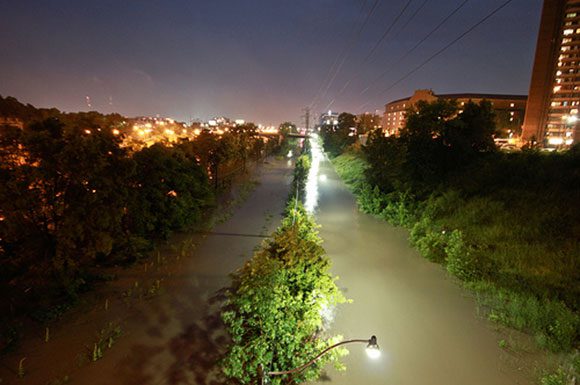The rain fell fast and hard, and left in its wake a waterlogged city with an hefty cleanup bill.
The Insurance Bureau of Canada has called the July storm that battered Toronto the most expensive natural disaster in Ontario history.
Five months later, the city found itself under a blanket of ice. That disaster left trees and property damaged and thousands without power for days in late December.
The two storms — which make up the bulk of the $171 million in storm-related costs the City of Toronto says it incurred in 2013 — have raised questions about how the city prepares for disasters.
“The response has been mostly what do we do after the disaster happens than what can we do to, if not prevent, then minimize the disasters,” said Franz Hartmann, executive director of the Toronto Environmental Alliance, which works with community groups to advocate for developing a sustainable city.
A main concern during disasters is loss of electricity becuase of downed power lines. To deal with the problem, Dr. Niru Nirupama, head of York University’s disaster and emergency management program, said burying power lines the same way gas lines are is a wise move.
“This is expensive, but if the budget allocation can allow this transition to take place over the next 10-15 years, this will solve the problem of power outage during disasters,” he said.
To help minimize the damage from flash floods, Nirupama said improving drainage systems and smart development are key.
“We can have a dry pond in every subdivision, just like we are required to have park in every neighborhood,” he said. “This dry pond will allow the excessive rainwater to get collected in it.”
But often, what might work as a solution to a summer problem — like extreme heat — may be a winter problem.
“We were lucky in 2013 that there weren’t any deaths linked to this, but with hot weather coming people are going to start dying,” Hartmann said.
One solution would be to expand tree coverage in the city, but snow could make tall trees a hazard in winter.
“Tall trees should not be allowed in heavily populated residential areas,” Nirupama said. “Even the roof of a standard house in Toronto is designed to hold only up to two feet of snow.”

